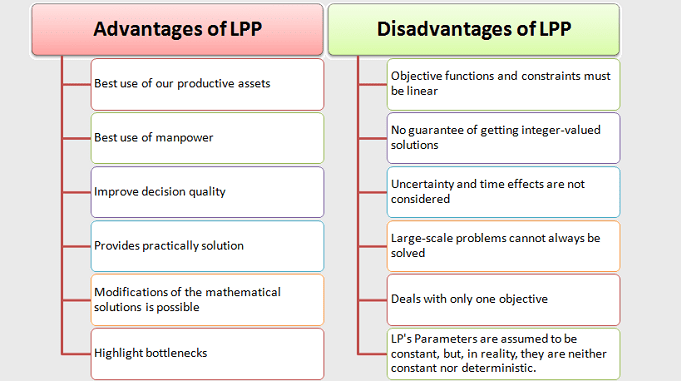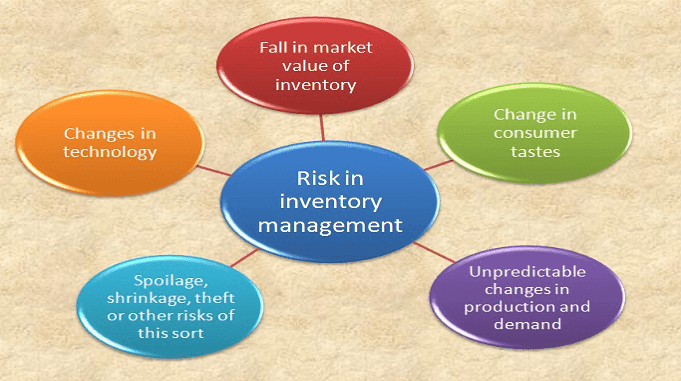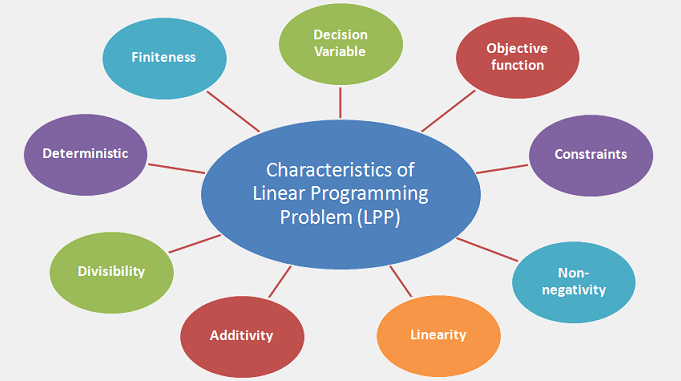
Principles of Modelling in Operation Research:
Let us now outline general principles useful in guiding the formulation of the models within the context of OR. The model building and their users both should be consciously aware of the following ten principles of modelling in operation research:
1. Do not build up a complicated model when a simple one will suffice.
A common guiding principle for mathematicians who are attempting to extend the theory or to develop techniques with wide applications is building the strongest possible model. However, in the actual practice of building models for specific purposes, the best advice is to “keep it simple”.
2. Beware of molding the problem to fit the technique.
For example, an expert on linear programming techniques may tend to view every problem he encounters as required in a linear programming solution. In fact, not all optimization problems involve only linear functions. Also, not all OR problems involve optimization. As a matter of fact, not all real-world problems call for operations research! Of course, everyone searches for reality on his own terms, so the field of OR is not unique in this regard. Being human we rely on the methods we are most comfortable in using and have been most successful within the past. We are certainly not able to use techniques in which we have no competence, and we cannot hope to be competent in all techniques. We must divide OR experts into three main categories:
(i) Technique developers. (ii) Teacher and (iii) Problem solvers.
In particular one should be ready to tolerate the behaviour “I have found a cure but I am trying to search a disease to fit it” among technique developers and teachers.
3. The deduction phase of modelling must be conducted rigorously.
The reason for requiring rigorous deduction is that one wants to be sure that if model conclusions are inconsistent with reality, then the defect lies in the assumptions. One application of this principle is that one must be extremely careful when programming computers. Hidden “bugs” are especially dangerous when they do not prevent the program from running but simply produce results, which are not consistent with the intention of the model.
4. Models should be validated prior to implementation.
For example, if a model is constructed to forecast the monthly sales of a particular commodity, it could be tested using historical data to compare the forecasts it would have produced to the actual sales. In case, if the model cannot be validated prior to its implementation, then it can be implemented in phases for validation. For example, a new model for inventory control may be implemented for a certain selected group of items while the older system is retained for the majority of the remaining items. If the model proves successful, more items can be placed within its range. It is also worth noting that real things change in time. A highly satisfactory model may very well degrade with age. So periodic re-evaluation is necessary.
5. A model should never be taken too literally.
For example, suppose that one has to construct an elaborate computer model of the Indian economy with many competent researchers spending a great deal of time and money in getting all kinds of complicated interactions and relationships. Under such circumstances, it can be easily believed as if the model duplicates itself to the real system. This danger continues to increase as the models become larger and more sophisticated, as they must deal with increasingly complicated problems.
6. A model should neither be pressed to do nor criticized for failing to do that for which it was never intended.
One example of this error would be the use of a forecasting model to predict so far into the future that the data on which the forecasts are based have no relevance. Another example is the use of certain network methods to describe the activities involved in a complex project. A model should not be stretched beyond its capabilities.
7. Beware of over-selling a model.
This principle is of particular importance for the OR professional because most nontechnical benefactors of an operations researcher’s work are not likely to understand his methods. The increased technicality of one’s methods also increases the burden of responsibility on the OR professional to distinguish clearly between his role as model manipulator and model interpreter. In those cases where the assumptions can be challenged, it would be dishonest to use the model.
8. Some of the primary benefits of modelling are associated with the process of developing the model.
It is true in general that a model is never as useful to anyone else as it is to those who are involved in building it up. The model itself never contains the full knowledge and understanding of the real system that the builder must acquire in order to successfully model it, and there is no practical way to convey this knowledge and understanding properly. In some cases, the sole benefits may occur while the model is being developed. In such cases, the model may have no further value once it is completed, An example of this case might occur when a small group of people attempts to develop a formal plan for some subject. The plan is the final model, but the real problem may be to agree on ‘what the objectives ought to be’.
9. A model cannot be any better than the information that goes into it.
Like a computer program, a model can only manipulate the data provided to it; it cannot recognize and correct for deficiencies in input. Models may condense data or convert it to more useful forms, but they do not have the capacity to generate it. In some situations, it is always better to gather more information about the system instead of exerting more effort on modern constructions.
10. Models cannot replace decision-makers.
The purpose of OR models should not be supposed to provide “Optimal solutions” free from human subjectivity and error. OR models can aid decision-makers and thereby permit better decisions to be made. However, they do not make the job of decision making easier. Definitely, the role of experience, intuition and judgment in decision-making is undiminished.
(Source – Various books of college library)
Copyrighted Material © 2019 - 2024 Prinsli.com - All rights reserved
All content on this website is copyrighted. It is prohibited to copy, publish or distribute the content and images of this website through any website, book, newspaper, software, videos, YouTube Channel or any other medium without written permission. You are not authorized to alter, obscure or remove any proprietary information, copyright or logo from this Website in any way. If any of these rules are violated, it will be strongly protested and legal action will be taken.





Be the first to comment